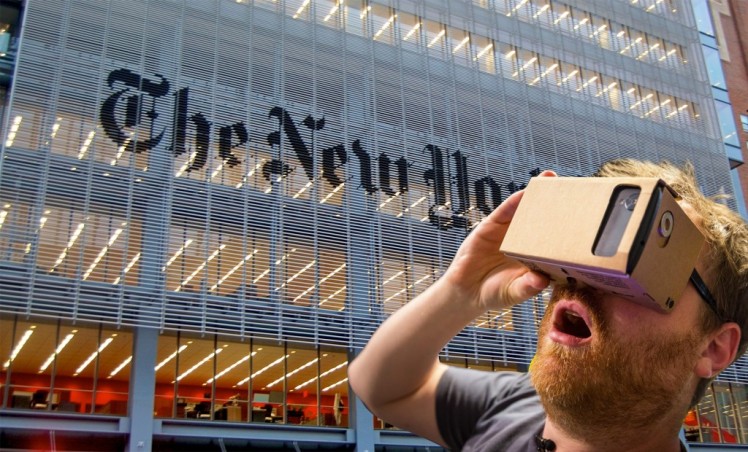Newsrooms of today are being forced to become increasingly innovative – as the world becomes becomes more digital and technological, so does storytelling. What used to be a Sunday morning ritual of sitting down, coffee and newspaper in hand, has become a reach for a smartphone, and a swipe across to see the top news stories of the day. Newspapers have transformed into digital editions – easily accessible online and to a smart phone or tablet – and with an easy-to-navigate layout, selecting only stories you want to read has never been more simple. And this is just the beginning.
News is accessible via many platforms, and the delivery of news is ever-changing. Print journalism has evolved into virtual reality stories online, News anchors are rapping headlines to engage young viewers, and world health epidemics are being prevented through newspaper ink. According to Brian Veseling,’innovation and experimentation are now the order of the day’ (Trends in the Newsroom Report, 2015)- and this innovation isn’t slowing down anytime soon.
Virtual Reality journalism, or VR journalism, is one of the most technologically advanced and informative platforms of modern journalism. Erin Polgreen, a journalist for the Colombia Journalism Review, writes that VR journalism is ‘providing valuable, vital public services with remarkable emotional punch’ (CJR, 2014). VR stories allows the viewer to be placed into the context and immerse themselves into the story, and the lives of those in it. In November of 2015, the New York Times launched its own virtual reality application, NYTVR, and along with it, the publisher’s first VR story, ‘The Displaced’ – a story that follows three children from different countries, and places the viewer in the middle of the world’s refugee crisis.
The power of this documentary-style news story lies in its ability to create emotion and empathy towards the children and their situation. The 10-minute video places the viewer into the world of each child – we see and hear of the destruction, devastation and their heartbreak, but also their resilience and their pleasure in the small things.
Whilst VR sounds like an amazing and extremely worthwhile journalistic platform to focus on, Stanford Journalism’s VR journalism guide does identify some downfalls, including the difficulties of 360-degree viewing, complicated production and editing processes and ethical dilemmas. Migielecz and Zacariah identify that one of these dilemmas includes breaking traditional video journalist roles – that a journalist is always in front of the camera and narrating the story.
However, I think that whilst this is breaking from video journalism tradition, VR is excelling journalism and multimedia production and changing the very face of journalism – which is the whole idea of innovative journalism. This trend also faces the problem of longevity – is it just a phase of journalism, or will it stick? – but if we use ‘The Displaced’ as a starting point, the emotion combined with information in these stories will guarantee the durability of this platform.

References –
Veseling, B. 2015, ‘Trend 9 – Innovation in Small Newsrooms, Trends in Newsrooms 2015, World Editors Forum
Migielicz, G. & Zacharia, J. 2016, ‘Stanford Journalism Program’s guide to using virtual reality for storytelling – dos & don’ts, Stanford_Journalism, 1 August, viewed November 9 2016, <http://journalism.stanford.edu/news-stanford-vr-journalism-guide-virtual-reality/>
Polgreen, E. 2014, ‘Virtual reality is journalism’s next frontier’, Columbia Journalism Review, November 19, viewed November 9 2016 < http://www.cjr.org/innovations/virtual_reality_journalism.php>